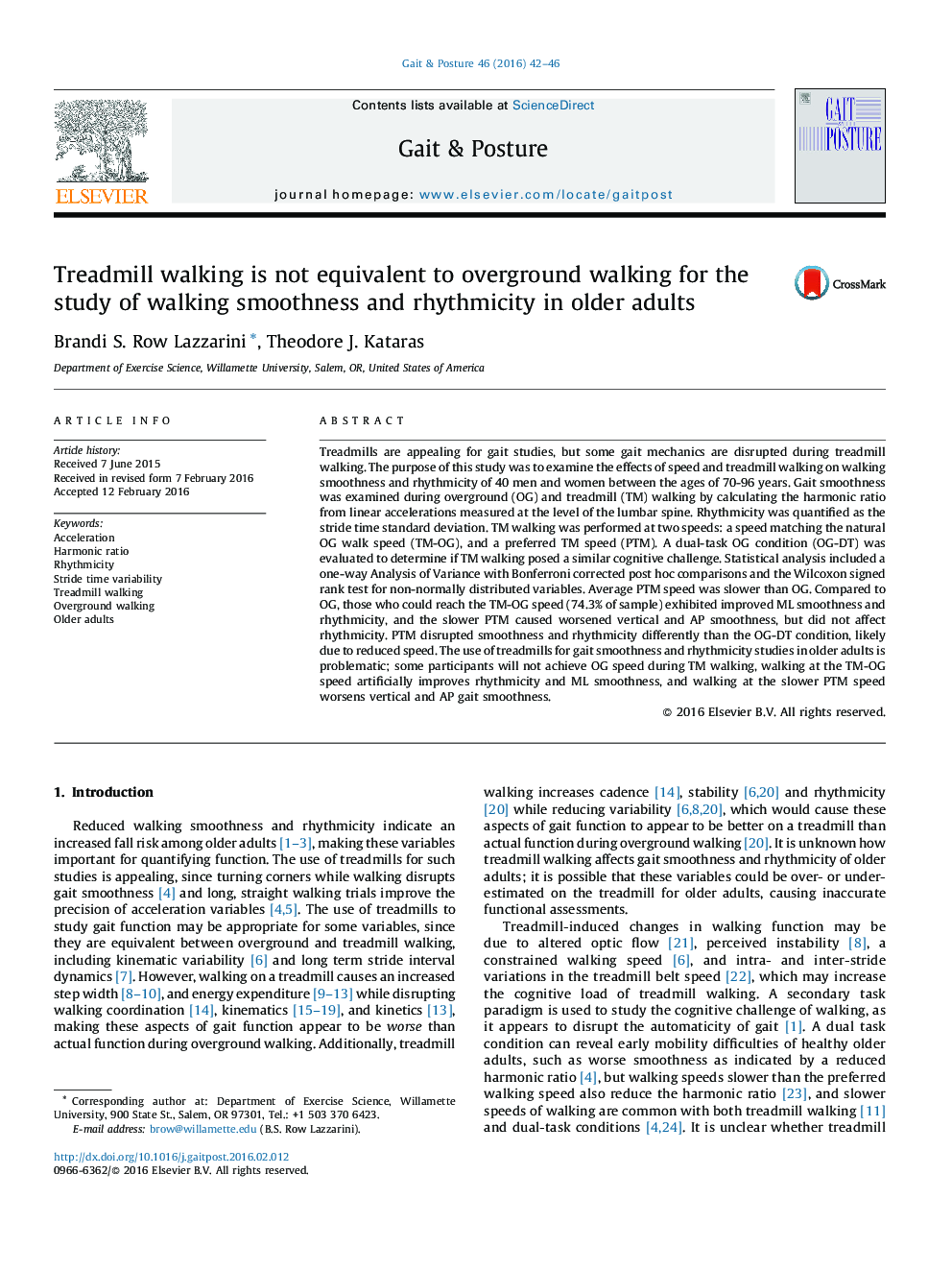| Article ID | Journal | Published Year | Pages | File Type |
|---|---|---|---|---|
| 6205783 | Gait & Posture | 2016 | 5 Pages |
â¢Trunk acceleration quantified gait smoothness and rhythmicity in older adults.â¢Treadmill (TM) walking evaluated to determine equivalency to overground (OG).â¢TM walking at OG speed improved rhythmicity and ML smoothness.â¢TM walking at preferred TM speed worsened smoothness; probable speed effect.â¢TM is not equivalent to OG for smoothness and rhythmicity studies of older adults.
Treadmills are appealing for gait studies, but some gait mechanics are disrupted during treadmill walking. The purpose of this study was to examine the effects of speed and treadmill walking on walking smoothness and rhythmicity of 40 men and women between the ages of 70-96 years. Gait smoothness was examined during overground (OG) and treadmill (TM) walking by calculating the harmonic ratio from linear accelerations measured at the level of the lumbar spine. Rhythmicity was quantified as the stride time standard deviation. TM walking was performed at two speeds: a speed matching the natural OG walk speed (TM-OG), and a preferred TM speed (PTM). A dual-task OG condition (OG-DT) was evaluated to determine if TM walking posed a similar cognitive challenge. Statistical analysis included a one-way Analysis of Variance with Bonferroni corrected post hoc comparisons and the Wilcoxon signed rank test for non-normally distributed variables. Average PTM speed was slower than OG. Compared to OG, those who could reach the TM-OG speed (74.3% of sample) exhibited improved ML smoothness and rhythmicity, and the slower PTM caused worsened vertical and AP smoothness, but did not affect rhythmicity. PTM disrupted smoothness and rhythmicity differently than the OG-DT condition, likely due to reduced speed. The use of treadmills for gait smoothness and rhythmicity studies in older adults is problematic; some participants will not achieve OG speed during TM walking, walking at the TM-OG speed artificially improves rhythmicity and ML smoothness, and walking at the slower PTM speed worsens vertical and AP gait smoothness.
